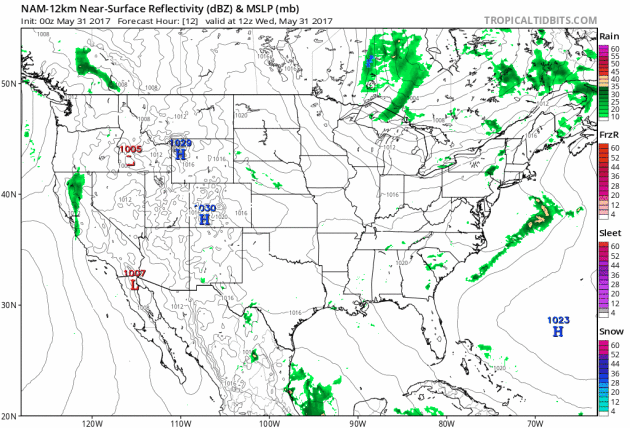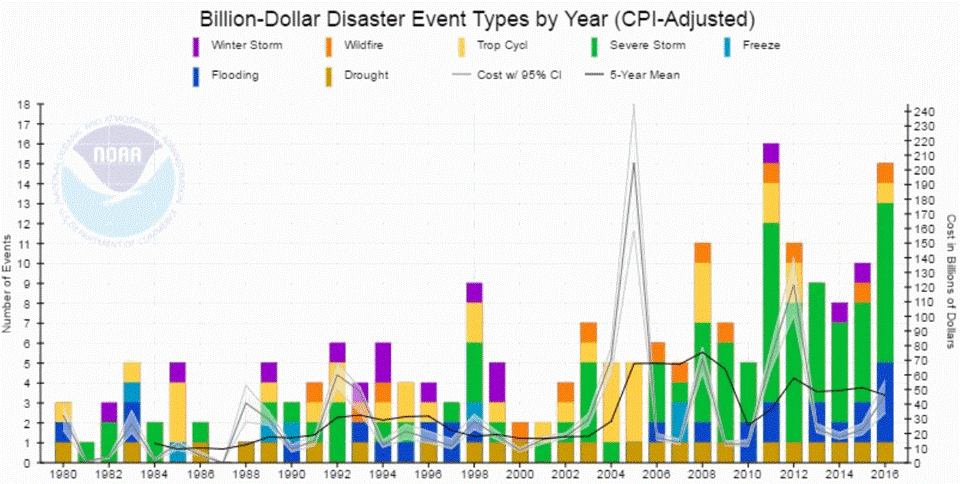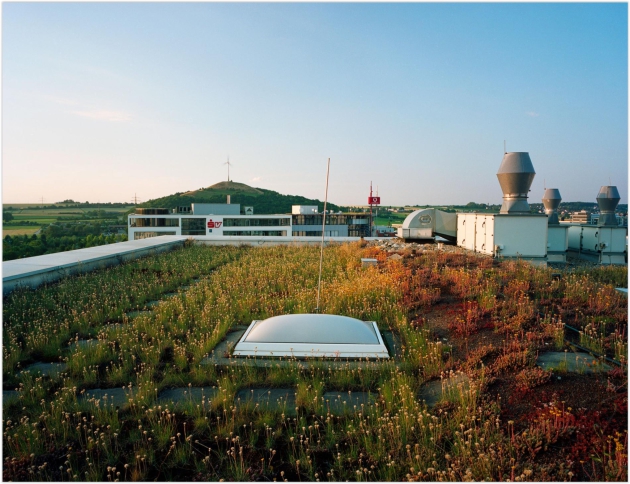60 F. high temperature yesterday in the Twin Cities.
74 F. average high on May 30.
84 F. high on May 30, 2016.
May 31, 1934: Extreme heat impacts the Twin Cities, with highs of 107 in St. Paul and 106 in Minneapolis. Rush City reached 110. Numerous cases of heat ailments affect people and livestock.
May 31, 1932: A heat wave hits southern Minnesota, with highs of 108 at Campbell, Fairmont, Faribault, and New Ulm.
"Summer Lite": A Cool Bias Much of the Summer?
After 19 consecutive months of warmer than average temperatures May should wind up slightly cooler than normal. And it may just be a signal of a cooler, more comfortable summer to come.
It's true that any weather forecast beyond 5-7 days is more of a hand-waving experiment, a semi-educated guess, even on a good day, but sometimes we can detect trends ("warmer/cooler/wetter/drier").
I'm slightly cross-eyed from staring at long-range models, which all hint at a warm ridge of high pressure for the western USA much of the summer, with a cooling northwest flow east of the Rockies pulling Canadian air south - taking some of the edge off the worst heat & humidity from Minnesota to Maine. We'll see our fair share of sweaty warm fronts but the odds of oppressive heat waves lingering week after week have diminished. If anything I see a slightly cool, wet bias into August.
Stifle a primal scream; the sun comes out today with highs in the 70s; low 80s by Friday with a few strong to severe T-storms possible. Some rain may spill into Saturday before a northeast breeze dries us out on Sunday.
Wait, a summer that isn't stinking-hot? I guess we can all live with that.

Penn State Predicting Above Average Hurricane Season for Atlantic Basin. Here's an excerpt from Penn State's ESSC, the Earth System Science Center: "ESSC scientist Michael E. Mann, alumnus Michael Kozar, and researcher Sonya K. Miller have released their seasonal prediction for the 2017 North Atlantic hurricane season, which officially starts on June 1st and runs through November 30th. The prediction is for 15.3 +/- 3.9 total named tropical cyclones, which corresponds to a range between 11 and 20 storms with a best estimate of 15 named storms. This prediction was made using the statistical model of Kozar et al. (2012, see PDF here). This statistical model builds upon the past work of Sabbatelli and Mann (2007, see PDF here) by considering a larger number of climate predictors and including corrections for the historical undercount of events..."
Photo credit: "A damaged tree in Finnup Park, Garden City, Kansas. The tree was split by the weight of heavy snow from an unseasonably late snowfall." (Photo courtesy of Kathy Sexson.)

Atmospheric Holding Pattern. Weather systems are slow and sluggish; the circulation creeping along in slow motion, as if powered by a handful of (drained) AAA batteries; fronts and storms more prone to getting "stuck". Where have you heard that before? The atmosphere is warming and capable of holding more water vapor, more fuel for storms. And if the weather is, in fact, slowing down, the potential for flooding goes up. 2016 brought 160 natural disasters across North America with 19 major floods in the USA; the most since records were started in 1980, according to reinsurance company Munich Re. At the rate we're going 2017 may be just as wet.

Pakistan's Hottest Day Recorded in Turbat. 122F in the shade? Here's an excerpt from The Express Tribune in Pakistan: "Citizens of Turbat sweltered through the hottest day recorded in Pakistan’s history, as the mercury shot up to 53.5°C on Sunday. The temperature equalled the one measured on May 27, 2010 in Mohenjo Daro which broke a 12-year record – 53°C in Larkana on May 31, 1998...."
How Rising Seas Drowned the Flood Insurance Program. Unless you have very deep pockets and an iron-reinforced stomach I'd avoid property within a few feet of sea level. The bubble bursts when people no longer have access to the flood insurance mandated by their mortgage bankers. Climate Central reports on a growing headaches for coastal residents: "...Today, the NFIP is effectively bankrupt. It owes the U.S. Treasury nearly $25 billion – money it borrowed from federal taxpayers to cover its obligations in Sandy, Katrina (2005), and Hurricane Ike (2008). No one expects that money to be repaid. Some coastal state lawmakers are even calling for Congress to write off the massive debt, contending it is the only way the troubled insurance program, which is up for reauthorization this year, can regain its financial footing. Wiping away the debt will help. But it is only a matter of time until the next big storm drains the coffers again. Even relatively weak hurricanes cause hundreds of millions in damage, while monster storms like Katrina and Sandy cause billions. Complicating matters, the NFIP has improbably subsidized thousands of risky properties along the coast – low-lying houses that flood over and over – by charging them below-market premiums to entice them to join the program. Now the federal flood program faces no less than an existential threat. As seas rise, coastal floodplains are expected to expand, exposing more property to routine flooding, surge, and waves. By some estimates, hundreds of thousands of U.S. houses could be underwater by century’s end and a trillion dollars worth of property at risk..."
Photo credit: "Aerial photo of damaged homes along New Jersey shore after Hurricane Sandy." Credit: Greg Thompson/USFWS/flickr

Photo credit: "Mark Bishop opens the hood of his Honda Insight, which he converted to run on electricity." John Upton/Climate Central.
Look To The Sun: A Conservative's Case for Solar Energy. Here's an excerpt of an Op-Ed at TheHill: "...Nationally, solar now employs more than 260,000 people — growing 12 times faster than the rest of the U.S. economy — and that number will continue to grow. Oh, and by the way, these are good-quality, local jobs that cannot be outsourced. Residential rooftop solar paired with net metering — which gives consumers credits for excess power that is returned to the electrical grid — offers an opportunity for our country’s rapidly aging grid. Just think about it. The more energy homeowners are creating directly from the place it will be used, the less need we’ll have for distribution and transmission infrastructure, better known as poles and wires. And as batteries become cheaper and more efficient, folks will begin to store the energy they create to help curtail daily spikes in energy demand. That’s less demand on our already stressed energy grid and more reliability and efficiency from a new way of doing business..."

Who Will Pay For The Future If Not the Robots? WIRED.com attempts to connect the dots: "Robots are taking over the world’s workforce—and why shouldn’t they? For so many jobs, machines are faster, more consistent, smarter, and cheaper than you or I will ever be. As advances in artificial intelligence accelerate, robots will spread into all corners of the labor market: blue collar and white collar, service work and knowledge work alike. Along with their jobs, people will lose their incomes. When that happens, governments will also lose theirs. Where does the money come from without incomes to tax? One San Francisco lawmaker is trying to get ahead of this likely revenue gap by going after the source of the problem: She wants to tax the robots..."

TODAY: Welcome dose of sunshine. Winds: NW 10-15. High: 72
WEDNESDAY NIGHT: Mostly clear and comfortable. Low: 52
THURSDAY: Partly sunny and warmer. Winds: S 7-12. High: 78
FRIDAY: Some sticky sun, strong to severe PM T-storms. Winds: SE 10-15. Wake-up: 60. High: 82
SATURDAY: Turning cooler, lingering showers and T-storms. Winds: NW 8-13. Wake-up: 63. High: near 70
SUNDAY: Mostly cloudy, cooler. Stray shower possible. Winds: NE 8-13. Wake-up: 55. High: 66
MONDAY: Lingering clouds, few sprinkles. Winds: N 8-13. Wake-up: 50. High: 63
TUESDAY: Partly sunny, pleasant again. Winds: NE 7-12. Wake-up: 49. High: 71
Globally,
flooding is the most common disaster risk, accounting for nearly half
of all weather-related disasters during the past 20 years. Exposure and
vulnerability to flood risks are on the rise: the proportion of the
world population living in flood-prone river basins has increased about
114 percent and population exposed to coastal areas has grown 192
percent during the last decade.
"We can't afford to continue to invest in short term solutions that don't take into account how weather patterns, sea levels and land use are changing the nature and severity of flooding," said Anita van Breda, World Wildlife Fund's senior director of environment and disaster. "The traditional approaches we've used to manage flooding in the past – like sea walls and levees – in most cases, won't work in isolation for the types of floods we're likely to experience in the future."
Read more at: https://phys.org/news/2017-05-harnessing-nature.html#jCp
"We can't afford to continue to invest in short term solutions that don't take into account how weather patterns, sea levels and land use are changing the nature and severity of flooding," said Anita van Breda, World Wildlife Fund's senior director of environment and disaster. "The traditional approaches we've used to manage flooding in the past – like sea walls and levees – in most cases, won't work in isolation for the types of floods we're likely to experience in the future."
Read more at: https://phys.org/news/2017-05-harnessing-nature.html#jCp
Globally,
flooding is the most common disaster risk, accounting for nearly half
of all weather-related disasters during the past 20 years. Exposure and
vulnerability to flood risks are on the rise: the proportion of the
world population living in flood-prone river basins has increased about
114 percent and population exposed to coastal areas has grown 192
percent during the last decade.
"We can't afford to continue to invest in short term solutions that don't take into account how weather patterns, sea levels and land use are changing the nature and severity of flooding," said Anita van Breda, World Wildlife Fund's senior director of environment and disaster. "The traditional approaches we've used to manage flooding in the past – like sea walls and levees – in most cases, won't work in isolation for the types of floods we're likely to experience in the future."
Read more at: https://phys.org/news/2017-05-harnessing-nature.html#jCp
"We can't afford to continue to invest in short term solutions that don't take into account how weather patterns, sea levels and land use are changing the nature and severity of flooding," said Anita van Breda, World Wildlife Fund's senior director of environment and disaster. "The traditional approaches we've used to manage flooding in the past – like sea walls and levees – in most cases, won't work in isolation for the types of floods we're likely to experience in the future."
Read more at: https://phys.org/news/2017-05-harnessing-nature.html#jCp
Climate Stories...
The Ghost of Climate Change Future. The consequences of rising seas are already showing up with greater frequency in Hawaii, as reported by The Atlantic: "The water is everywhere. For the second time in a month, Hawaii’s coastlines have been swamped by epic tides. The phenomenon, known as a king tide, is actually a convergence of a few different factors: high lunar tides, rising sea levels associated with last year’s strong El Niño and climate change, swirling pockets of ocean eddies, and a robust south swell—that is, big waves rolling onto south-facing shores. King tides happen routinely in the Hawaiian Islands—a few times a year, usually—but this year’s batch have been particularly extreme. Data from federal tide stations around Hawaii show that water levels have been up to six inches above predicted tidal heights since early last year. In April, levels peaked at more than nine inches above predicted tides and broke the record high for any water level around Hawaii since 1905. Scientists say the record is likely to be broken again in 2017..."
Photo credit: "A historically high tide washes up over Queens Beach in Waikiki over Memorial Day Weekend." rafberg81 / Hawai'i and Pacific Islands King Tides Project.
Facing Climate Change on the Louisiana Bayous - In Pictures. The Guardian has a photo essay: "Isle de Jean Charles in Louisiana is home to a Native American community who fished, hunted, trapped and farmed the land. But since 1955, more than 90% of the island’s original land mass has washed away, the loss caused by logging, oil exploration, hurricanes and ineffective flood control. A report by 13 US federal agencies found the island and its tribal residents to be among the nation’s most vulnerable, as the remaining land will be lost to rising sea levels..."
File photo: William Widmer, Redux.
Photo credit: "A Crown Point woman wades through water pushed on to the Lafitte-Larose Highway by Hurricane Rita in 2005." (Photo by Susan Poag, NOLA.com | The Times-Picayune archive).
Photo credit: "Residential apartments are seen next to the dried-up Ratanpura lake on the outskirts of Ahmedabad, India May 9, 2016." REUTERS/Amit Dave/File Photo.
GOP Letter Urging Trump to Dump Climate Deal Gets Legal Argument Wrong, Law Experts Say. Here's an excerpt from InsideClimate News: "A group of heavyweight republican senators is using a legal argument to try to convince President Donald Trump to exit the Paris climate agreement, but according to the experts whose papers they relied on, their interpretation is all wrong.
The 22 senators, including Senate Majority Leader Mitch McConnell and
Senate Environment and Public Works Committee Chairman John Barrasso, sent a letter to Trump
Thursday arguing that if the U.S. doesn't "make a clean break" from the
Paris Agreement, it could make it impossible for Trump to rescind the Clean Power Plan. "They
wrote the letter to frighten the administration with the prospect of
litigation," said Michael Burger, the executive director of the Sabin
Center for Climate Change Law at Columbia University, "but the legal
arguments are fundamentally wrong..."
Meet Jane, a Climate Scientists Who Fled Trump's Government. High Country News reports: "...Zelikova's
experience mirrors a broader phenomenon. Many scientists felt
threatened enough by Trump's victory to abandon their usual detached
objectivity. They wrote members of Congress to defend science funding
and scientific advisory panels and used their knowledge of government
research to protect data they feared could be erased from websites. They
sete up alternative Twitter sites for government agencies and planned
and participated in protests..."

What Happens If The U.S. Withdraws From the Paris Climate Change Agreement. CBS News reports: "...Scientists said it would worsen an already bad problem and make it far more difficult to prevent crossing a dangerous global temperature threshold. Calculations suggest it could result in emissions of up to 3 billion tons of additional carbon dioxide in the air a year. When it adds up year after year, scientists said that is enough to melt ice sheets faster, raise seas higher and trigger more extreme weather. "If we lag, the noose tightens," said Princeton University climate scientist Michael Oppenheimer, co-editor of the peer-reviewed journal Climatic Change..."

Photo credit: "Buildings with green roofs, like this one in Stuttgart, Germany, don't use as much energy as standard buildings and emit fewer greenhouse gasses." Photo by Diane Cook and Len Jenshel, National Geographic Creative.
No comments:
Post a Comment